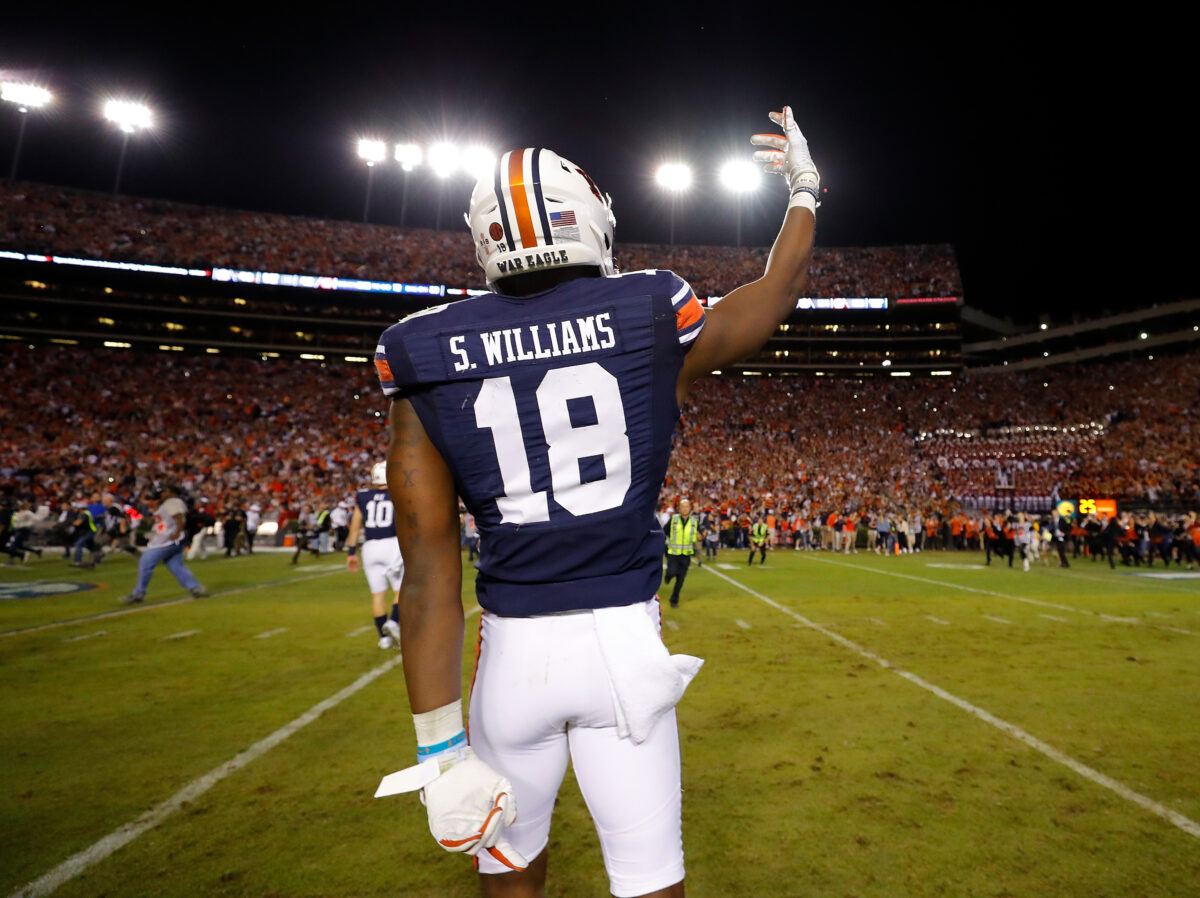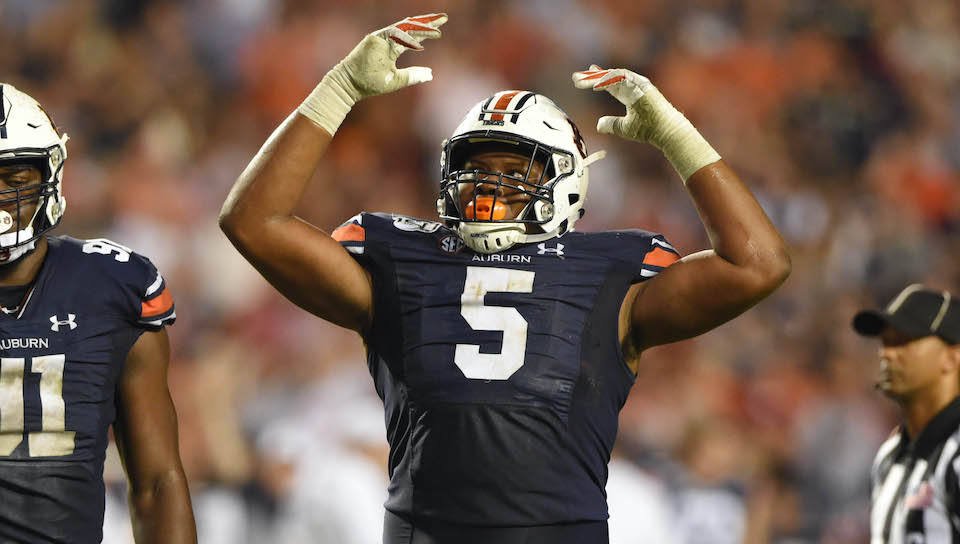It’s never too early to examine and speculate about the Detroit Lions roster. Currently, the Lions have 90-players on their roster, and come September, there will likely be some difficult decisions to make when determining their final 53-players.
Previously, in this series of articles at Lions Wire, we rounded out the running backs group, declared a winner in the fullback versus H-back competition, added an offensive weapon, narrowed down the offensive line, broke down the defensive line, established the top options at linebacker, and in this piece, we will project the Lions’ defensive backs — with 11 spots open on the 53-man roster.
Setting the table
While there are clearly defined starting roles on defense, the defensive backs are grouped together as their positional reserve roles do have some crossover, especially on special teams.
On defense, the Lions deploy five defensive backs in their base set, relying on two outside corners, a JOKER safety, a free safety, with the slot role alternating between a nickel corner or third safety. When they expand to six defensive backs, they typically keep both slot options on the field at the same time. The Lions also have defensive sets that use seven defensive backs in obvious passing situations.
Because of all defensive combinations and the frequency at which they deploy three corners and/or three safeties, it’s important to identify all six players as starters — even if they are not officially identified as such.
Identifying starters at corner
At corner, there has been a two-thirds overhaul among the starters with only Justin Coleman returning. Coleman has the potential to play both inside and out, but he takes roughly 75-percent of his snaps out of the slot.
The Lions were aggressive in landing free agent Desmond Trufant, and after seven years starting for the Falcons, it is assumed he will take a starting role on the outside. Trufant will turn 29-years-old when the season starts and the Lions are likely hoping he can hold down the CB1 role while their top 2020 draft pick acclimates to the league.
Jeff Okudah was drafted third overall for a reason and even general manager Bob Quinn has acknowledged that he is expecting him to start in 2020. Okudah has the talent level to win the CB1 job outright, or make claim to the role by the end of the season.
Erik’s take: Okudah, Trufant, and Coleman are clear Day 1 starters.
CB depth battle
After the trio above, the next notable name at corner is Amani Oruwariye. Oruwariye flashed skills in training camp, showed development throughout the year and should be considered the top reserve option. He is an outside corner only — and that’s probably not changing — but there is a need for a reliable third option at this spot.
Challenging Oruwariye on the outside will be Darryl Roberts — a two-year starter with the Jets — and third-year undrafted corner Mike Ford. Both players have plenty of speed and can contribute on multiple special teams units. Roberts has the experience edge, while Ford has shown the ability to step up when his number was called for the Lions in the past.
The options in the slot are not as strong with special teamers Jamal Agnew and free agent Tony McRae challenging to backup Coleman. The need here isn’t as pressing due to the third safety, but the Lions would benefit from at least one of these players stepping up their ability to play on defense.
Erik’s take: Lock Oruwariye in here based on upside alone, but beyond that, special teams will likely be the deciding factor.
Identifying starters at safety
Tracy Walker’s star is shining brighter with every passing day and he plays one of the most critical spots in the Lions’ scheme: the JOKER safety role. The JOKER is the most flexible player on the field, and Walker will split his time between the box (linebacker level), over the slot (covering tight ends, slot receivers, and running backs), and at deep safety.
Walker is reliable as a deep safety valve, but he can be most impactful when he lines up closer to the line of scrimmage — which is why the Lions traded for Duron Harmon.
Harmon will take over the single-high free safety role and will be the first natural centerfielder the Lions have had since Glover Quin. His experience — and success — in the scheme makes him an instant starter, and his ability to flex between positions will allow him and Walker to disguise coverage intentions.
The battle for the third safety role (the old Tavon Wilson role) will come down to second-year safety Will Harris and free agent acquisition Jayron Kearse.
Harris was drafted in the third round of the 2019 draft with the intention of developing him into this role. Last year he cross-trained at all three safety spots but was noticeably more successful when lining up over the slot and in the box. He should be the front runner for the job, but Kearse’s skill set offers a new range of skills. Kearse is big (6-4, 216), long (34.25″ arm length), and can cover, which will make him very appealing when the Lions want to play matchup football.
Erik’s take: Walker and Harmon are locked in starters, while Harris should get the early nod for the third-safety role based on his scheme experience.
Safety depth battle
Kearse should be an easy addition to the trio above, giving them four players they should feel comfortable putting on the field.
Beyond those four, the group is rounded out with four undrafted players: C.J. Moore in 2019 and three more added this offseason in Jalen Elliott, Jeremiah Dinson, and Bobby Price.
If the Lions keep a fifth safety, which one will likely come down to how they perform on special teams.
Erik’s take: Kearse is in. A fifth safety is still an option.
Special teams battles
With 11 spots open for defensive backs, we have filled eight of them with four corners and four safeties — leaving three spots remaining.
After being benched in Week 2, Agnew bounced back in a big way, scoring touchdowns on both a punt and kick returns, the only player to do that in the NFL last season. He will be challenged by fifth-round pick, Jason Huntley — who had five kick return touchdowns in college — but Agnew has been a weapon on special teams and, at this time, should be expected to secure a spot on the 53.
That leaves the Lions with two spots remaining — and no gunners.
When the Lions signed McRae, I specifically broke down how that impacted the gunner competition. To summarize my conclusion, McRae’s relationship with new special teams coordinator Brayden Coombs should give him a leg up for one of the gunner roles, leaving Dee Virgin, Moore, and Ford battling it out for the final spot. Roberts — who wasn’t on the roster when I wrote the article — should also be in consideration here. Elliott, Dinson, and Price will also get a shot in camp but until I see them compete in person I can’t consider them options.
Based on the information available to me at this time, the final gunner role will likely come down to Virgin, Moore, Ford, and Roberts. Any of these four could make a push for a spot, but Virgin and Moore — the Lions’ starting gunners last year — lack Roberts and Ford’s ability to contribute on defense, which could be a difference-maker.
Erik’s take: The final three spots go to Agnew, McRae, and Ford for now, but all of their roles are in jeopardy come training camp.
Conclusion
In this projection, the Lions wrap up their defense with 11 players, who will play in the following roles:
- Outside corners: Okudah, Trufant, Oruwariye, Ford
- Nickel/dime corners: Coleman, Agnew, McRae
- Position versatile safeties: Walker, Harmon, Harris, Kearse
- Kick/punt returner: Agnew
- Gunner: McRae, Ford
- 4-phase special teams contributors: Kearse, Harris









